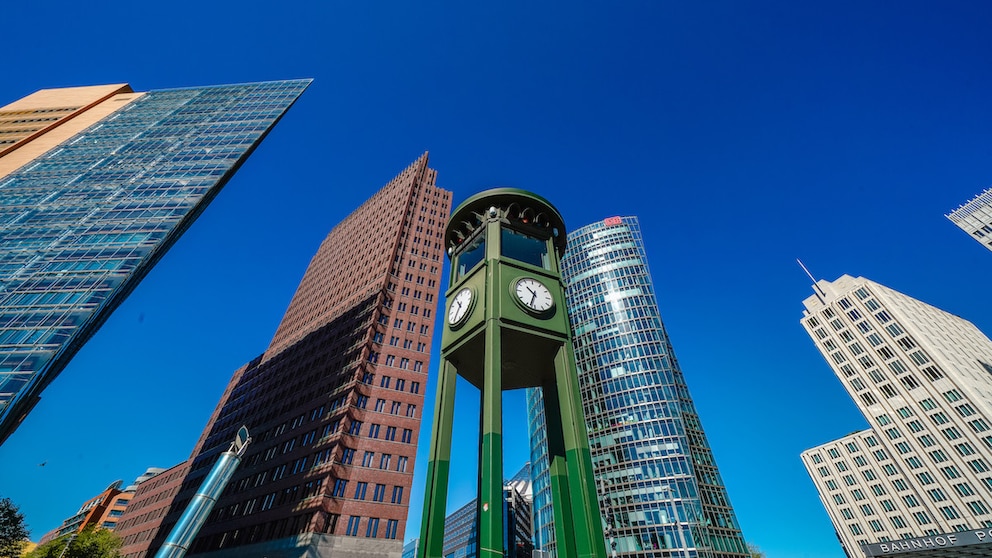April 16, 2025, 11:33 am | Read time: 5 minutes
In Berlin, some clocks operate differently—they are not just timekeepers. Some are art, history, experiments, and spectacles. TRAVELBOOK presents the most unusual examples.
The attempts to make time measurable and visible began with the invention of the sundial. Since time indication inevitably ceased at night and in cloudy weather, mechanical and eventually digital timepieces were developed. Today, hundreds of public clocks tick in Berlin. Most of them are purely functional, equipped with easily readable dials or displays. However, some examples operate without hands; instead, water flows through them or lights blink in various shapes.
Overview
World Clock at Alexanderplatz
Meeting point and place of longing: Centrally located at Alexanderplatz, the World Clock has symbolized global connectedness since 1969 and certainly sparked a desire to travel to far-off lands during the GDR era. The rotating cylinder made of aluminum and reinforced concrete, designed by industrial designer Erich John, displays the time in 24 world cities at a glance. Even in East Berlin, the World Clock was a popular meeting point in the city, and during the reunification, it became one of the most important gathering places for demonstrations. One could say that standing beneath it today means being at the pulse of (Berlin) time.
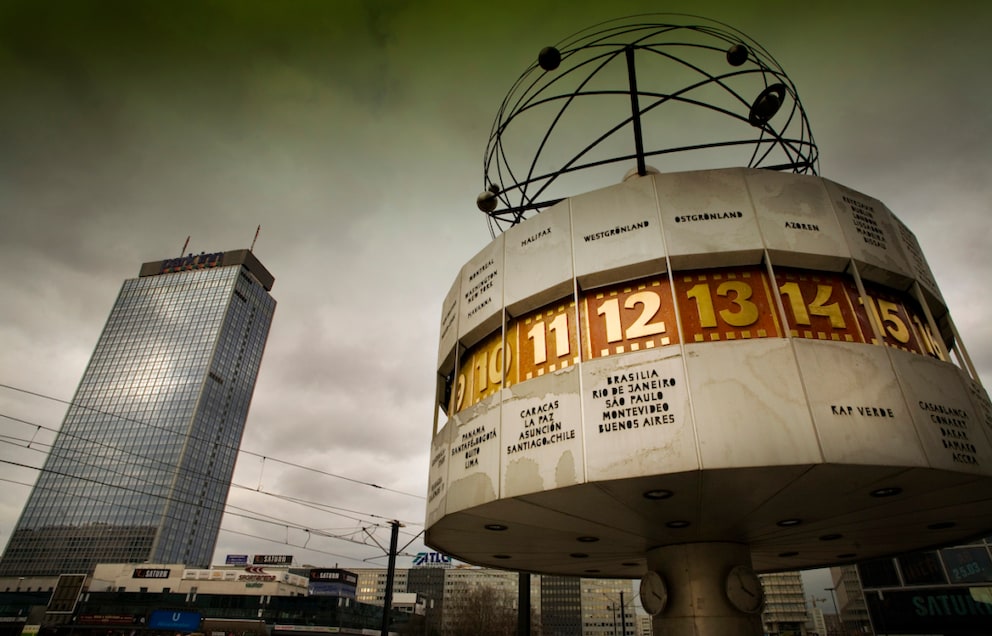
How to get there?: Alexanderplatz, Berlin-Mitte; S- and U-Bahn station Alexanderplatz, various U- and S-Bahn lines (such as U2, U5, U8, S3, S5) as well as bus and tram lines (such as Bus 100 and 200, Tram M4, M5)
Flowing Time — the Water Clock at Europa-Center
Who doesn’t know it? Time flows and slips away, impossible to hold—like water. This is precisely the principle behind the legendary 13-meter-high water clock at the Europa-Center in Charlottenburg. The fascinating artwork of green water and glass is the largest water clock in Europe, built in 1982 and designed by French physicist Bernard Gitton. Time pours into glass spheres stacked on top of each other, accompanied by a gigantic pendulum. In front of the three-story giant clock, one can pause wonderfully. With the gentle gurgling, the falling drops, and the counting of minutes, one forgets the hustle and bustle of the metropolis. Time can be so decelerating!

How to get there? Europa-Center, Tauentzienstraße (Charlottenburg); U-Bahn station Kurfürstendamm, Bus lines 100, 200
Berlin Clock — Tricky Time Calculation
How difficult it was for us to learn to read the clock! Especially for children of the analog age. But anyone who thinks analog and digital are enough can be proven wrong by the so-called Berlin Clock. It requires mathematical understanding and is not immediately comprehensible. It is based on a specific system (though not set theory). Developed in 1975 by inventor Dieter Binninger, it displays time with illuminated color blocks — without hands or numbers. As the first clock of its kind worldwide, and as a public installation, it was far ahead of its time.
After a move and several years of hiatus, this unique retro-style example has stood since 1996 in front of the Tourist Information Center near the Zoologischer Garten station. An absolute must for tech nerds, math fans, or anyone who has time and a desire to puzzle.
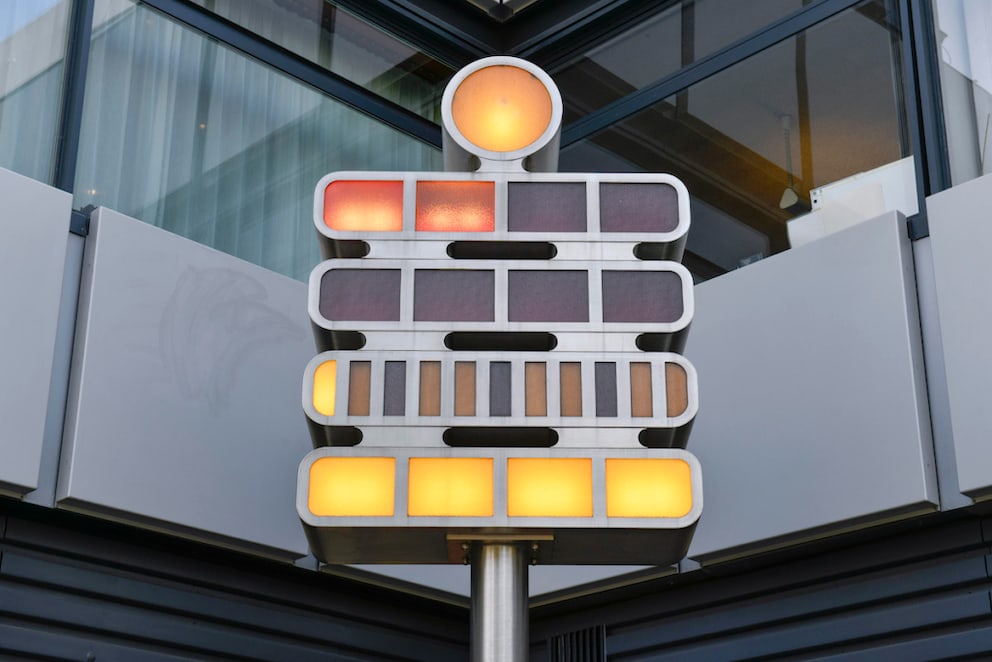
How to get there?: Budapester Straße 45 (corner of Kurfürstenstraße) at the entrance of the Tourist Information; Zoologischer Garten station, U-Bahn, Bus lines 100 and 200
The Green Clock — Traffic Tower at Potsdamer Platz
The Green Clock has secured a rather prominent location, perched in the middle of the busy Potsdamer Platz (see large photo above). This location is fitting, as the Green Clock is a replica of Germany’s first traffic light (1924) and thus more than just a timepiece. On each of the five sides of the 8.5-meter-high traffic tower, a clock is displayed, making the time visible from all directions. At the time, the traffic tower was considered a traffic engineering innovation and soon became a modern landmark of the capital. Even today, the 1997 replica is a very popular photo subject. Incidentally, in the original traffic tower, a policeman sat in a glass cabin above the clock and manually switched the traffic light signals.
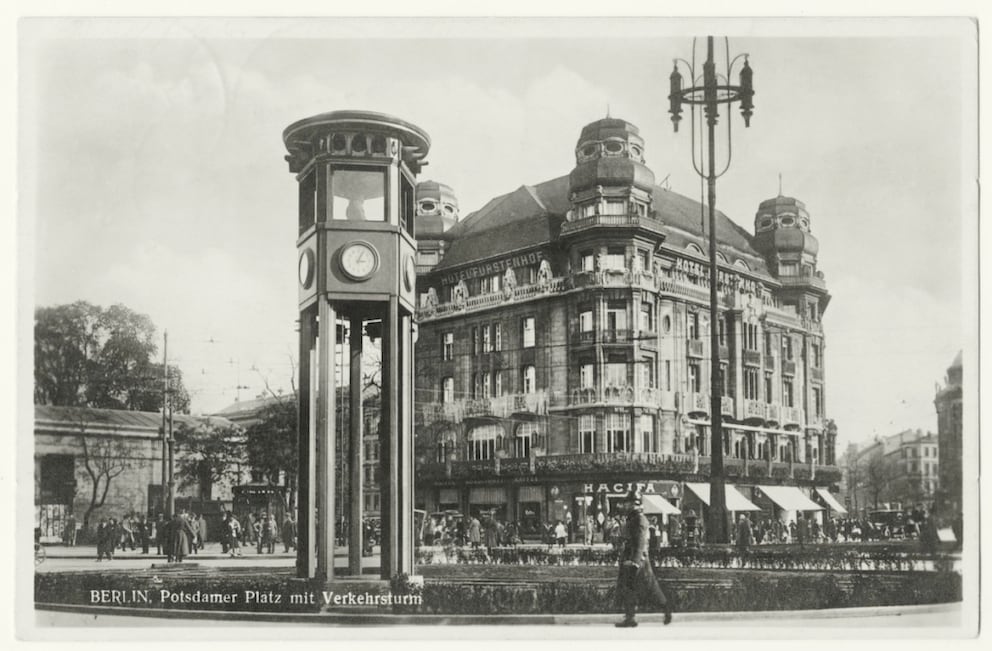
How to get there? Potsdamer Platz, central; S- and U-Bahn station Potsdamer Platz

These are the 9 best museums in Germany

The Dreadful Story of This Tree in Cambodia

Hong Kong Is the City with the Best Public Transporta in the World
Foucault Pendulum at the Technology Museum
Not a clock in the traditional sense, but still a very special timepiece, is the large Foucault Pendulum at the German Technology Museum in Berlin. At first glance, it fascinates with its towering size, which could hint at the dimension of what this experiment illustrates: The pendulum shows that the Earth rotates on its own axis. This is made visible by the slow change in the direction of its swing over the course of a day.
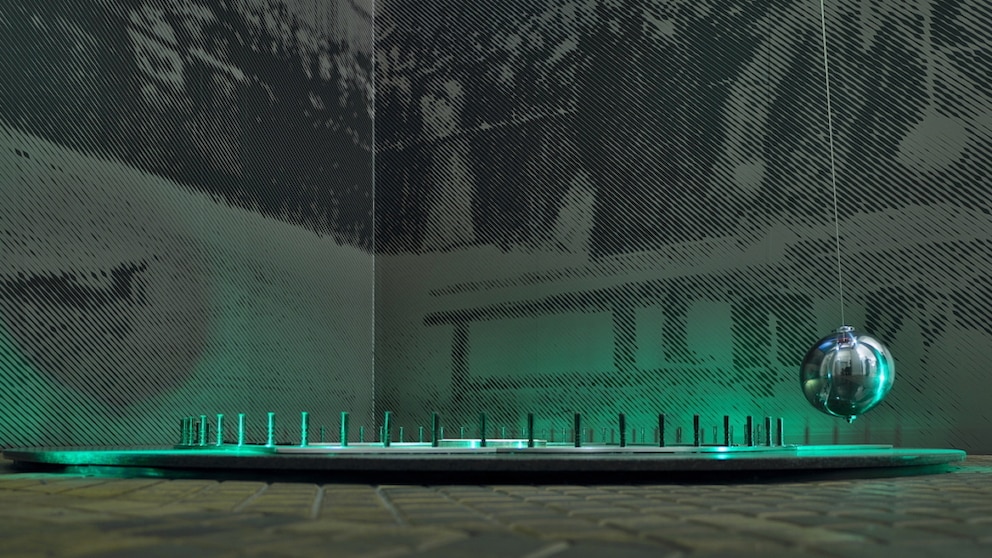
Photo: Wikimedia Commons/Bautsch / CC0 1.0
How to get there? The Foucault Pendulum is located in the atrium of the Science Center Spectrum at the German Technology Museum, Trebbiner Straße 9; Gleisdreieck station, U-Bahn lines U1 and U2.

